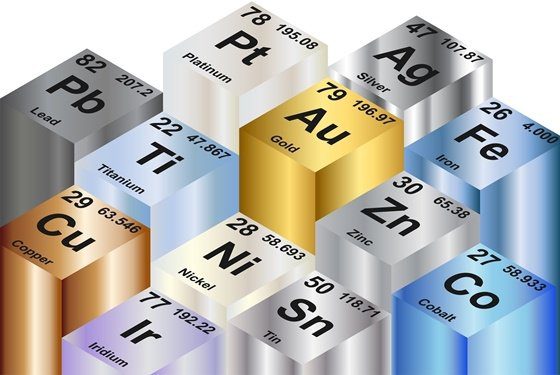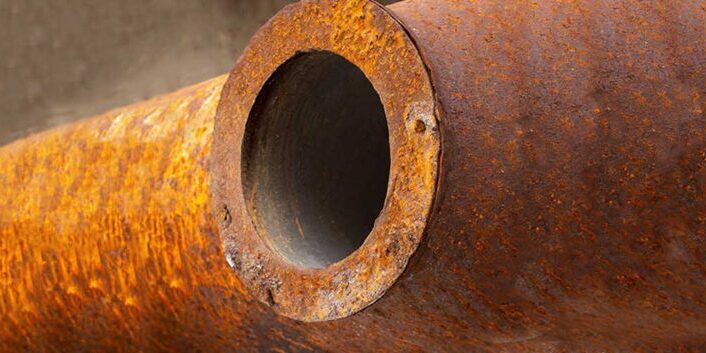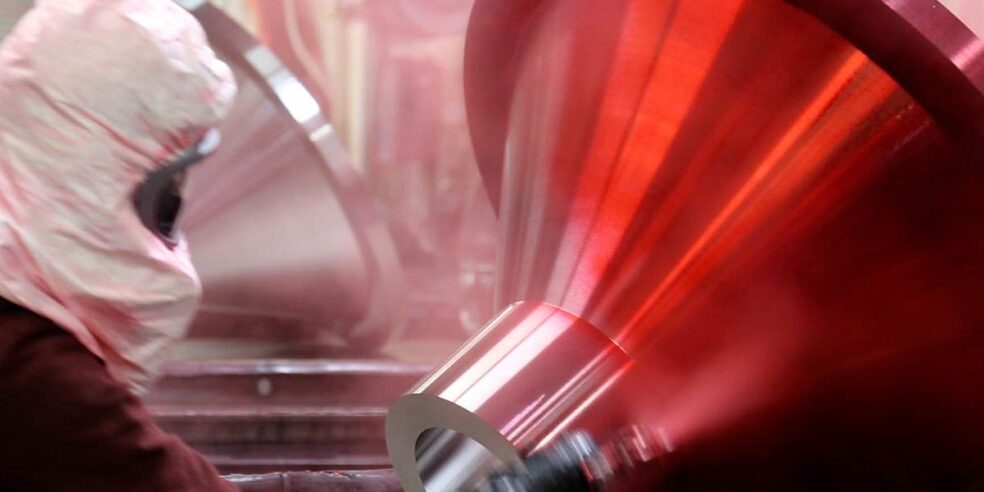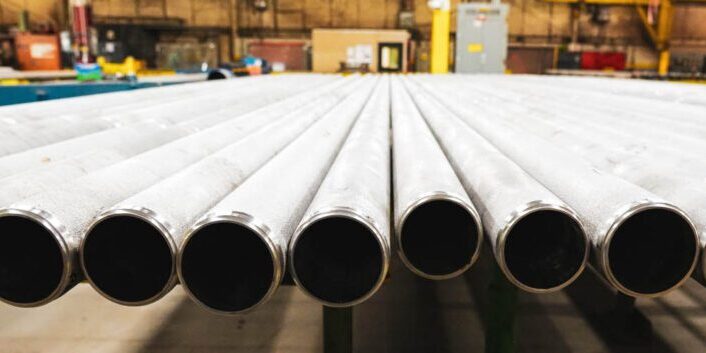Blog What Are The Differences Between The Mechanical Properties And Physical Properties Of An Alloy?
By: Dave Olsen

What are the properties of metal and what are the key differences between them?
Physical and mechanical properties are important considerations when choosing a material for a specific application. Below are the definitions of the physical properties of metals and mechanical properties of metals, along with a few examples.
- The physical properties of an alloy are items that are measurable. Physical characteristics of metal are things such as density, melting point, conductivity, and coefficient of expansion.
- The mechanical properties of an alloy are how the metal performs when different forces are applied to them. Mechanical characteristics include things such as strength, ductility, and wear resistance.
A material’s chemical composition and internal structure (such as grain size or crystal structure) determine its mechanical and physical properties. Mechanical properties may be affected by processing due to the rearrangement of the internal structure. Metalworking processes or heat treatment might play a role in affecting some physical properties like density and electrical conductivity. However, these effects are usually insignificant.
How do the properties of a metal determine its uses? Mechanical and physical properties are key determinants of what alloy is suitable for a given application when multiple alloys can work. In almost every instance, an engineer designs the metal part to perform within a given range of physical and mechanical properties.
Many mechanical properties are interdependent. For example, high performance in one category may be coupled with lower performance in another. For example, higher strength in metals may be achieved at the expense of lower ductility. So, a good understanding of the product’s environment will lead to the selection of the best material for the application.
What Are Common Mechanical And Physical Properties Of A Material?
A description of some common mechanical and physical properties of metals will provide information that product designers could consider in selecting materials for a given application. Here are the top fourteen common physical properties and mechanical properties to consider.
- Conductivity
- Corrosion Resistance
- Density
- Ductility / Malleability
- Elasticity / Stiffness
- Fracture Toughness
- Hardness
- Plasticity
- Strength, Fatigue
- Strength, Shear
- Strength, Tensile
- Strength, Yield
- Toughness
- Wear Resistance
Below are detailed descriptions of each property.
1. Conductivity
Thermal conductivity is a measure of the quantity of heat that flows through a material. Materials with low thermal conductivity may be used as insulators, and those with high thermal conductivity may be heat sinks. Metals that exhibit high thermal conductivity are candidates for applications such as heat exchangers or refrigeration. Low thermal conductivity materials may be used in high-temperature applications. However, in many cases, high-temperature components require high thermal conductivity, so it is important to understand the specific environment. Electrical conductivity is like thermal conductivity, measuring the quantity of electricity that is transferred through a material of known cross-section and length.
2. Corrosion Resistance
Corrosion resistance describes a material’s ability to prevent natural chemical or electrochemical attack by the atmosphere, moisture, or other agents. Corrosion takes many forms including pitting, galvanic reaction, stress corrosion, parting, inter-granular, and others. Corrosion resistance may be expressed as the maximum depth in mils (0.001 inches) to which corrosion would penetrate in one year. Some materials are intrinsically corrosion-resistant, while others benefit from the addition of plating or coatings. Many metals that belong to families that resist corrosion are not totally safe from it and are still subject to the specific environmental conditions where they operate.
3. Density
Density falls under the definition of a physical property of metal. Density (often expressed as pounds per cubic inch or grams per cubic centimeter) describes the mass of the alloy per unit volume. The density of the alloy will determine how much a component of a certain size weighs. This factor is important in applications such as aerospace or automotive where weight is important. Engineers looking for lower-weight components may seek alloys that are less dense, but must then consider the strength-to-weight ratio. A higher-density material like steel might be chosen if it provides higher strength than a lower-density material.
4. Ductility / Malleability
Ductility and malleability are often considered together. Ductility is a physical property and malleability a mechanical property. Ductility is the ability of a material to deform plastically (i.e., stretch) without fracturing and retain the new shape when the load is removed. Think of it as the ability to stretch a given metal into a wire.
Ductility is often measured using a tensile test as a percentage of elongation, or the reduction in the cross-sectional area of the sample before failure. A tensile test can also be used to determine the Young’s Modulus or modulus of elasticity, an important stress/strain ratio used in many design calculations. The tendency of a material to resist cracking or breaking under stress makes ductile materials appropriate for other metalworking processes including rolling or drawing. Certain other processes such as cold working tend to make a metal less ductile.
Malleability, a physical property, describes a metal’s ability to be formed without breaking. Pressure, or compressive stress, is used to press or roll the material into thinner sheets. A material with high malleability will be able to withstand higher pressure without breaking.
5. Elasticity, Stiffness
Elasticity describes a material’s tendency to return to its original size and shape when a distorting force is removed. As opposed to materials that exhibit plasticity (where the change in shape is not reversible), an elastic material will return to its previous configuration when stress is removed.
The stiffness of a metal is often measured by Young’s Modulus, which compares the relationship between stress (the force applied) and strain (the resulting deformation). The higher the Modulus – meaning greater stress results in proportionally lesser deformation – the stiffer the material. Glass would be an example of a stiff/high Modulus material, whereas rubber would be a material that exhibits low stiffness/low Modulus. This is an important design consideration for applications where stiffness is required under load.
6. Fracture Toughness
Impact resistance is a measure of a material’s ability to withstand a shock. The effect of impact – a collision that occurs in a short period of time – is typically greater than the effect of a weaker force delivered over a longer period. So, consideration of impact resistance should be included when the application includes an elevated risk of impact. Certain metals may perform acceptably under static loads but fail under dynamic loads or when subjected to a collision. In the lab, the impact is often measured through a common Charpy test, where a weighted pendulum strikes a sample opposite of a machined V-notch.
7. Hardness
Hardness is defined as a material’s ability to resist permanent indentation (plastic deformation). Typically, the harder the material, the better it resists wear or deformation. The term hardness also refers to the local surface stiffness of a material or its resistance to scratching, abrasion, or cutting. The properties of a metal’s hardness are measured by employing methods as Brinell, Rockwell, and Vickers. These measure the depth and area of a depression by a harder material, including a steel ball, diamond, or another indenter.
8. Plasticity
Plasticity, the converse of elasticity, describes the tendency of a certain solid material to hold its new shape when subjected to forming forces. It is the quality that allows materials to be bent or worked into a permanent new shape. Materials transition from elastic behavior to plastic at the yield point.
9. Strength – Fatigue
Fatigue can lead to fracture under repeated or fluctuating stresses (e.g., loading or unloading) that have a maximum value less than the tensile strength of the material. Higher stresses will accelerate the time to failure (and vice versa) so there is a relationship between the stress and cycles to failure. Fatigue limit refers to the maximum stress the metal can withstand (the variable) in a given number of cycles. Conversely, the fatigue life measure holds the load fixed and measures how many load cycles the material can withstand before failure. Fatigue strength is an important consideration when designing components subjected to repetitive load conditions.
10. Strength – Shear
Shear strength is a consideration in applications like bolts or beams where the direction and magnitude of the stress is important. Shear occurs when directional forces cause the internal structure of the metal to slide against itself at the granular level.
11. Strength – Tensile
One of the most common metal property measures is tensile strength. Tensile strength refers to the amount of load a section of metal can withstand before it breaks. In lab testing, the metal will elongate but return to its original shape through the area of elastic deformation. When it reaches the point of permanent or plastic deformation (measured as yield) it retains the elongated shape even when the load is removed. At the tensile point, the load causes the metal to ultimately fracture. This measure helps differentiate between materials that are brittle from those that are more ductile. Tensile or ultimate tensile strength is measured in Newtons per square millimeter (Mega Pascals or MPa) or pounds per square inch.
12. Strength – Yield
Similar in concept and measure to tensile strength, yield strength describes the point after which the material under load will no longer return to its original position or shape. Deformation moves from elastic to plastic. Design calculations include the yield point to understand the limits of dimensional integrity under load. Like tensile strength, yield strength is measured in Newtons per square millimeter (Mega Pascals or MPa) or pounds per square inch.
13. Toughness
Measured using the Charpy impact test similar to Impact Resistance, toughness represents a material’s ability to absorb impact without fracturing at a given temperature. Since impact resistance is often lower at low temperatures, materials may become more brittle. Charpy values are commonly prescribed in ferrous alloys where the possibilities of low temperatures exist in the application (e.g. offshore oil platforms, oil pipelines) or where instantaneous loading is a consideration (e.g. ballistic containment in military or aircraft applications).
14. Wear Resistance
Wear resistance is a measure of a material’s ability to withstand the effect of two materials rubbing against each other. This can take many forms including adhesion, abrasion, scratching, gouging, galling, and others. When the metal materials are of different hardness, the softer metal can begin to show the effects first, and management of that may be part of the design. Even rolling can cause abrasion because of the presence of foreign materials.
Conclusion
Considering the mechanical and physical properties of metals helps to choose the ideal alloy for a given application. Because of the sheer number of materials available – and the ability to modify properties through alloying and heat treatment – it is important to consult with a metallurgist to select the material that provides the needed performance balanced with cost. We can help determine the right balance to achieve all necessary physical property and mechanical property requirements for any project. Contact us to learn more about MetalTek’s integrated alloy and manufacturing process expertise.



